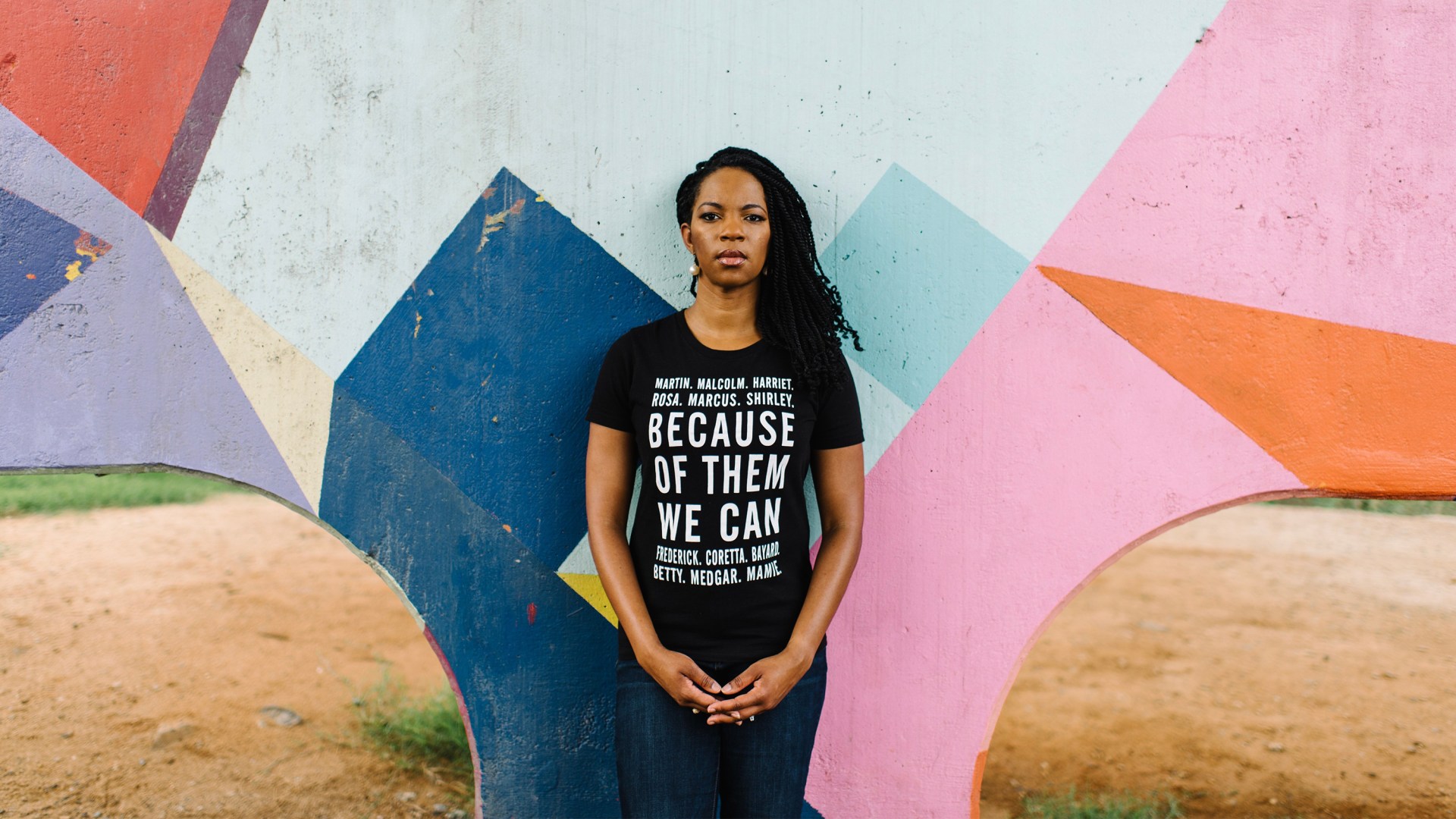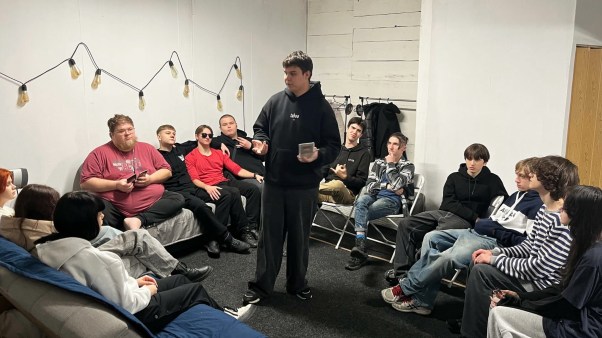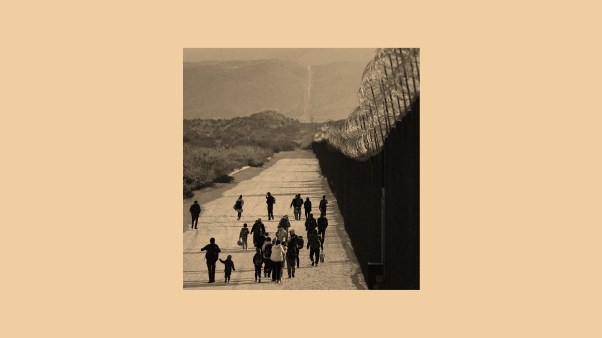In the fall of 2019, author and speaker Natasha Sistrunk Robinson moved to Alabama with her husband and daughter. When the pandemic hit in early 2020, she found herself doubly isolated in a new location.
After reading the book of Jeremiah, a particular passage “really jumped out at me,” says Robinson. It was 9:17–21, “where God tells the prophet Jeremiah to call the wailing women to wail until they are exhausted from crying so much. They’re wailing because the men have been taken out of the public square, and the children have been taken out of the streets, and ‘death has climbed in through our windows.’”
The story seemed very relevant to the moment. “Death was a thief climbing into our windows too,” says Robinson. “It was all around us, with the reality of the pandemic on top of all the racial injustice of that year.”
Inspired by the Old Testament model of lament, she started working on a book titled Voices of Lament (Baker Publishing Group, 2022), which features 29 women of color writing on themes of longing, injustice, and suffering.
Robinson, who now lives in North Carolina with her husband and daughter, hosts the podcast A Sojourner’s Truth and runs T3 Leadership Solutions and Leadership LINKS. She is currently a doctoral candidate in urban leadership ministry through a joint program between North Park and Fuller Theological Seminaries.
CT spoke recently with Robinson about her latest book and the community of women who contributed to it.
During the summer of 2020, you were reading through Jeremiah and the Psalms and thinking about lament and injustice. Tell us more about that journey.
As a Black woman, I was thinking about all the ways that our men had been taken out of the public square—whether by violence or mass incarceration, and so on. And of course, this is the George Floyd summer.
Psalm 37 ended up being an encouragement to me, in conjunction with the text from Jeremiah 9. God is very clear that he’s going to deal with the righteous, and he’s going to deal with the wicked, and he’s going to deal with them very intentionally.
I was looking at the women who were probably professional mourners and Jeremiah calling on them in a very difficult time, because they know what to do. He’s saying, “Teach your daughters how to wail, and teach us as a community how to wail.”
I thought about all the ways that women of color have modeled the spiritual practice of lament. I reached out to Kristie Anyabwile, one of our contributors. I told her that I thought God wanted to speak through women of color, and I asked for her input.
We started praying and going back and forth about the idea. I thought surely the world but certainly the church in our country needs this. And I felt like we were the ones to speak into the moment.
How did you go about putting together this group of women?
I am in relationship with a diverse community of people, and as I began this project, it was very important to me that it reflected who God is among women of color. If we are wailing, it’s like a chorus—singing or crying out in the wilderness—but we are singing in harmony, meaning everyone’s not singing the same note.
In the book, there is almost equal representation of Hispanic women, Asian American women, and African American women, and there’s about equal representation among Indigenous women, as well as global citizens. It was very intentional for me to have intergenerational representation too. Each of these women are serving the Lord in different ways.
We’ve built a beautiful community through writing this book.
What made you decide to make this book a compilation rather than just write all of it yourself?
At my age, part of the fight for justice is sponsoring people. It’s creating access and opportunity for people. About half of the women in the book already had a platform, and about half did not. I could have chosen only women with platforms, but I wanted to call on women who may not be well known but who have a heart for God, are faithful to the text, and have trust within their own communities.
Was it difficult to find a publisher?
There’s a narrative out there about women of color not being able to sell books in the Christian market. There’s a reason why that narrative exists. It’s not the women of color, and it’s not the quality of their education, research, or writing ability. I believe that it’s a systemic injustice in terms of how we go about publishing people and how we go about marketing and platforming them.
I’m so thankful for the work I’ve done with this publisher and that they were willing to put in the work and take a risk on this project. My prayer has been that this project becomes a classic, because that will also set a new precedent about what women of color can do as far as selling in the industry.
Was there anything about the process of editing this volume that surprised you?
The essay by Ka Richards wrecked me, as someone who served in the military. I learned how our government and military basically used her people as allies to fight on our behalf during the Vietnam War. Her people lost generations of their men and boys, and we didn’t fulfill our promise to them. Even to this day, her people, the Hmong, are still impacted.
I was heartbroken and so repentant because of how we treated her people. In a year when violence against our Asian American sisters and brothers was on such a rise, editing her story was a reminder of how arrogant we can be as Americans.
What are your prayers and hopes for the book?
One thing I’ve witnessed in my own life through the women who raised me and the women that I’ve been privileged to share time and space with is that we generally don’t abandon God when things get hard. That’s a testament to the church, because right now, we see so many young people leaving the church. There’s a prophetic witness to hearing from people who have been through hard things and stayed. These women love God and love the church, despite itself.
Talk about your view of community and how it shapes your theology.
I like to remind people when I’m discipling that the Bible is an Eastern book, and so it is concerned about the communal and how God is shaping a group of people to respond to him in very specific ways.
In Revelation, we see God drawing people to himself from every tribe, language, nation, and people group, and we see them worshiping around the throne of the Lamb. And my thing is that when we’re not listening to the different people groups that belong to the Lord, that are in relationship with the Lord, then I think we’re missing a part of how we see God.
And so I think it’s a part of spiritual discipline and part of our own discipleship to be intentional in reading more broadly. We will see God more clearly.
How do these ideas shape your vision for Christian female leaders?
Oftentimes in our discipleship, we talk about the individual—God blessing me and my house, God blessing my church and blessing my project. But that’s not what we see in the biblical text. I want readers to see the faithfulness of God to people groups across time.
In the biblical text, there are times when women are doing massive things to advance the kingdom, but we often gloss over them or think of the women as a footnote instead of as leaders playing an important role. I wanted people to experience the faithfulness of these female contributors by getting to know them and their stories.









